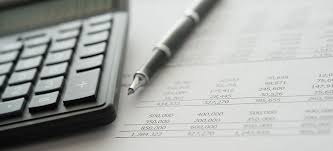Accounting statements and reports are key financial documents that businesses create and update periodically. These reports help businesses, investors and the government track different transactions and determine the financial health of the company. Learning about the significance and types of account reports can be important if you work in the banking, finance and accounting industry.

What Are Accounting Reports?
Accounting reports are structured business documents that contain information about a company’s finances, particularly revenues, expenses and profit or loss. These reports can be generic, providing an overview of the entire company’s accounts or extremely concise, giving thorough information about the sales or profitability of selected products. Depending on the goal, the format of these reports can take the form of profit-and-loss statements, balance sheets, statements of owner equity or statements of free cash flow. Specialised financial reports, like the accounts receivable or consolidated profits statements, focus on one aspect of the company’s finances and cash flow.An accounting or financial report may include data from all company departments or only analyse elements like profit or expenses. Most companies maintain accounting statements and report monthly, quarterly or annually to track changes in the company’s finances and determine if there is progress towards the company’s financial objectives.
An Accountant’s Report is a formal document prepared by an accountant or a chartered accountant (CA) that presents financial information about a business, individual, or organization. It contains financial data, observations, and the accountant’s opinion on the accuracy and reliability of the records. It is often used for internal decision-making, compliance, and external reporting to stakeholders.
Types of Accountant’s Reports
- Compilation Report:
- A basic report that presents financial information without providing any assurance.
- Based on information provided by the client.
- No audit or verification is performed.
- Often used for internal management purposes.
- Review Report:
- Provides limited assurance on the accuracy of financial statements.
- The accountant performs basic analytical procedures and inquiries.
- Less detailed than an audit but provides moderate confidence.
- Audit Report:
- A detailed report that provides reasonable assurance on the accuracy of financial statements.
- Prepared after a thorough audit process.
- Used by investors, regulators, and stakeholders.
- Forensic Report:
- Prepared during fraud investigations or legal proceedings.
- Includes detailed financial analysis, findings, and conclusions.
- Often used in litigation and legal cases.
- Special Purpose Report:
- Prepared for a specific objective (e.g., due diligence, merger, or acquisition).
- Tailored to meet the needs of the intended users.
Components of an Accountant’s Report
Title and Date:
- Clearly states that it is an Accountant’s Report.
- Includes the date of preparation.
Addressee:
- Specifies the intended recipient (client, board, or regulatory body).
Introduction:
- Outlines the scope and purpose of the report.
- Mentions the financial period being covered.
Financial Information:
- Includes balance sheets, income statements, and cash flow statements.
- May contain ratios, trends, and observations.
Accountant’s Opinion:
- States whether the financial statements are accurate and fair.
- In audit reports, the opinion can be:
- Unqualified: Clean report with no issues.
- Qualified: Financials are mostly accurate, but with some concerns.
- Adverse: Financials are materially misstated.
- Disclaimer: Insufficient information to provide an opinion.
Signature and Seal:
- Signed by the accountant or CA.
- May include the accountant’s membership number and firm details.
Importance of an Accountant’s Report
- Ensures financial transparency and accuracy.
- Helps in decision-making for management and investors.
- Used for compliance with regulatory authorities (e.g., Income Tax Department, GST authorities).
- Provides assurance to lenders and investors.
- Detects financial irregularities or fraud.
- Required during mergers, acquisitions, and legal proceedings.
FAQs
Difference Between Accountant’s Report and Audit Report?
| Aspect | Accountant’s Report | Audit Report |
|---|---|---|
| Purpose | Financial summary, limited assurance. | Provides reasonable assurance. |
| Scope | Less detailed, no verification. | Detailed with thorough verification. |
| Assurance Level | Limited or no assurance. | Reasonable assurance. |
| Prepared by | Accountant or CA. | Chartered Accountant (CA) only. |
| Legal Requirement | Not mandatory. | Mandatory for public companies. |
| Use Case | Internal use, management review. | External use, regulatory compliance. |
When Do You Need an Accountant’s Report?
- For tax filing and compliance.
- During loan applications or financial assessments.
- For financial planning and budgeting.
- During mergers, acquisitions, and valuations.
- For shareholder or board reporting.
- To detect and report financial irregularities.